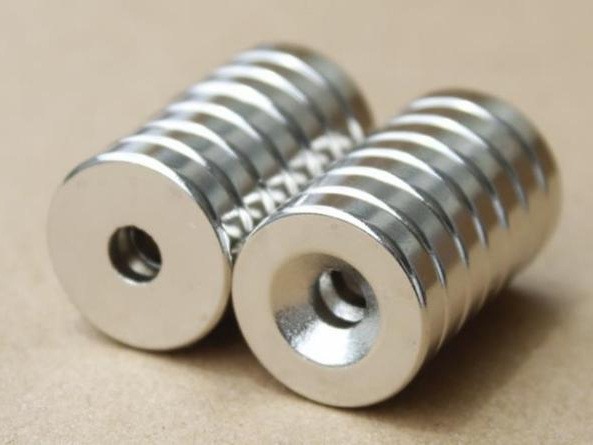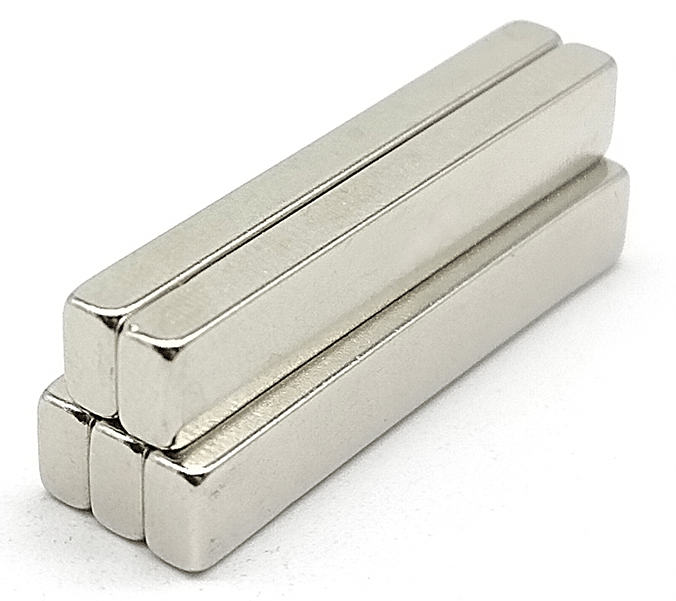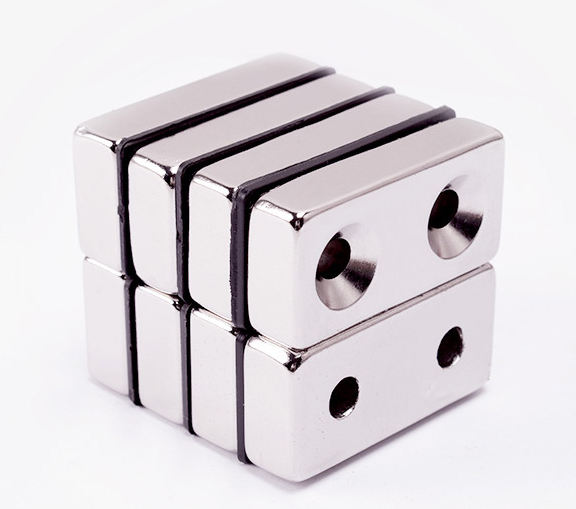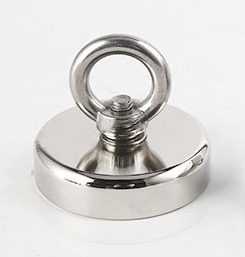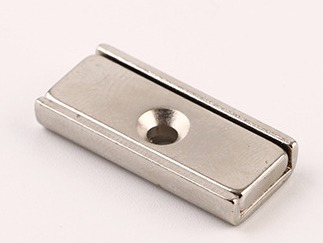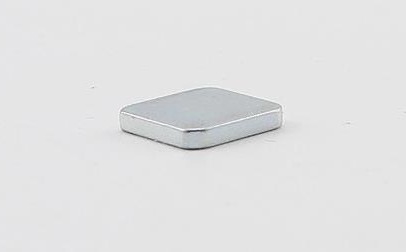What is the Magnetization of the Magnet?
First of all, let’s understand what is the magnetization method and principle of the magnet.
Magnetization refers to the process of increasing the magnetism of an insufficiently magnetic magnet or magnetizing a magnetic substance. When affected by the external energy, such as heating and impact, the magnetic moment direction of each magnetic domain will become inconsistent, and the magnetism will weaken or disappear. At this time, it will be demagnetized, and it needs to be magnetized in order to retain the original properties.
What does the direction of the magnetic moment depend on?
Below the Curie temperature, there are many small regions within a ferromagnetic or ferrimagnetic material that each have a spontaneous magnetic moment, and the magnetic moments are paired. The direction of their arrangement is disordered. If no magnetic field is applied for magnetization, the overall magnetic moment is zero. These small regions are called magnetic domains.
The interface between the magnetic domains is called a magnetic domain wall. When there is an external magnetic field, some magnetic moments in the magnetic domain turn to the direction of the external magnetic field, so that the total magnetic moment that is nearly consistent with the direction of the external magnetic field is increased. Such magnetic domains become larger, while others become smaller, resulting in higher magnetization. With the further increase of the external magnetic field intensity, the magnetization intensity increases, but even if the magnetic moments in the magnetic domain are oriented in the same way and become a single magnetic domain region, the magnetization direction is not completely consistent with the direction of the external magnetic field. Only when the strength of the external magnetic field increases to a certain extent, the magnetization directions of the magnetic moments in all the magnetic domains can be completely consistent with the orientation of the external magnetic field. At this time, the ferromagnet reaches the magnetic saturation state, that is, saturation magnetization.
Once the saturation magnetization is reached, even if the magnetic field is reduced to zero, the magnetic moment will not return to zero, and some magnetization effect will remain. This residual magnetization value is called residual magnetic induction (represented by the symbol Br). The saturation magnetization value is called saturation magnetic induction (Bs). If a reverse magnetic field is added to make the residual magnetic induction return to zero, the magnetic field strength at this time is called the coercive magnetic field strength or coercive force (Hc).
What is the method of magnetizing a magnet?
The magnetization of magnets includes constant current magnetization and pulse magnetization.
Constant current magnetization (low-voltage large-capacity capacitor discharge): suitable for magnets with low coercivity, such as ferrite magnets.
Pulse magnetization (high-voltage small-capacity capacitor discharge): suitable for magnets with high coercivity, such as NdFeB magnets.
How does magnetization work?
Constant current magnetizer
Working principle: The constant current of direct current is passed through the coil so that the coil generates a constant magnetic field. It is suitable for the magnetization of low-coercivity permanent magnet materials.
Pulse Magnetizer
Working principle: The instantaneous pulse high current is passed through the coil so that the coil generates a short super-strong magnetic field. Suitable for high coercivity permanent magnet materials or complex multi-pole magnetization. It is widely used in the production and application enterprises of permanent magnet materials and is suitable for the magnetization of various permanent magnet material parts and components. Such as the AlNiCo series, ferrite series, rare earth permanent magnet series, etc., with the characteristics of high efficiency and reliability.
The magnetizer is to charge the DC power into the capacitor and discharge it through the coil with the least resistance. When discharging, the peak value of pulse current can reach tens of thousands of amperes. This current pulse creates a strong magnetic field in the coil, which permanently magnetizes the hard magnetic material in the field coil. When the magnetizing capacitor is working, the peak value of the pulse current is extremely high, and the performance of the capacitor to withstand the inrush current is very high. In fact, it is an electromagnet with a strong magnetic force. It is equipped with iron blocks of various shapes as additional magnetic poles to form a closed magnetic circuit with the magnetized body.
What are the magnetization directions of rubidium iron boron magnets?
NdFeB is generally divided into axial magnetization and radial magnetization according to the required working surface. NdFeB permanent magnet material is a permanent magnet material with intermetallic compound Nd2Fe14B as the matrix. The main components are neodymium (Nd), iron (Fe) and boron (B). The rare earth element is mainly neodymium (Nd). In order to obtain different properties, some rare earth metals such as dysprosium (Dy) and praseodymium (Pr) can be used. Iron can also be replaced by metal parts such as cobalt (Co) and aluminum (Al). The boron content is small, but it plays an important role in the formation of square crystal structures between metal compounds. This compound has high saturation magnetization, high uniaxial anisotropy and high Curie temperature.
Conventional magnet shapes are round, square, ring, tile, and so on. The magnetization directions we often hear are radial magnetization, axial magnetization, and so on. Let’s take a look at the introduction and difference between radial magnetization and axial magnetization.
Round magnets (square magnets):
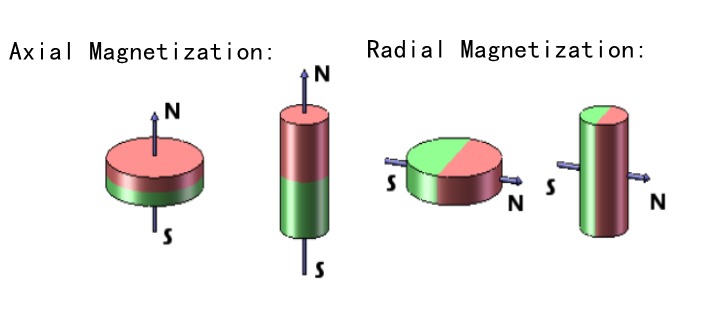
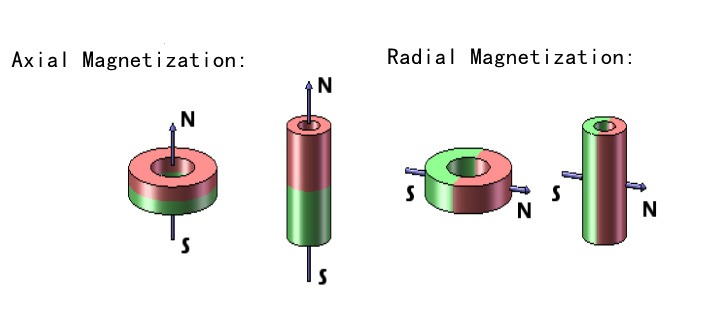
KENENG is a manufacturer with decades of experience in manufacturing magnets. Can provide a large number of standard stock magnets, and can also customize services according to customer needs. Because we have professional design engineers to serve you. Please feel free to contact us for more information.

